Discovering Galicia and the Rias
I may have spent most of my time in Spain in Andalucía or Madrid, but all of Spain is completely stunning and travel-worthy. Today’s post is a guest post from Destinia.co.uk about the beautiful region of Galicia in the north of Spain. Enjoy!
Spain is a country where the cuisine and the culture vary from the North to the South. The South and the Mediterranean coast are the most visited places, known for their beaches and their chiringuitos, bars on the beach. The plains of Castille, where wine and food flow next to ancient cathedrals in traditional towns, are an undiscovered world for most travellers. For such a touristic country relatively few have ventured into the colder Northern regions of Asturias, Cantabria and Galicia.
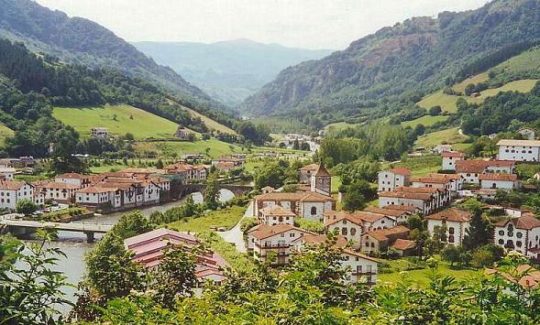
Galicia: not your typical idea of Spain (photo credit)
The northern provinces are the home to ancient tongues, prehistoric caves and stone beaches. Galicia, in the northwestern corner of the country, is particularly known for its scenery, where thousands of deep green trees merge with the ocean.
Galicia is filled with ancient castles, cathedrals and monasteries. Most of these can be visited, and many have been converted into paradores, large hotels with antique furniture.
The Baiona Parador is one of the most visited ones, where guests can stay in an ancient medieval castle and fort perched above the Atlantic Ocean. The city of Baiona is located on the coast, and it was here where Christopher Columbus landed after having discovered the New World. Visitors can see the replica of the Pinta ship in the harbour.
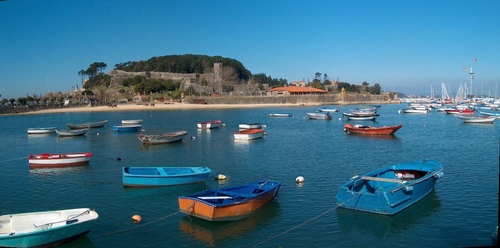
Baiona Parador (photo credit)
A Coruña is one of Galicia’s main cities. The city’s aquarium has a room dedicated to Jules Verne’s Nautillus. The Fine Arts Museum has several galleries where visitors can explore local Galician art, masterpieces by Spanish painters and pieces by European painters. The museum has several temporary exhibitions. In order to enjoy views of the white sand beaches and the many inlets that line the coast visitors can climb up to Monte San Pedro. The city has one of Europe’s oldest lighthouses, the Torre de Hercules.
Santiago de Compostela, an historic pilgrimage site, is a city where visitors can enjoy the best of the Galician cuisine while sitting near a plaza with views towards the cathedral. It is considered he region’s best known city and is the end point of the Camino de Santiago, a pilgrim route. The Catedral de Santiago de Compostela is where Saint James the Greater, St. James the Apostle, is buried. The altar is decorated with a golden scallop shell which pilgrims kiss once they have finished the pilgrimage. The Cathedral’s facades are decorated with reliefs in a Baroque style, Gothic cloisters and medieval towers.
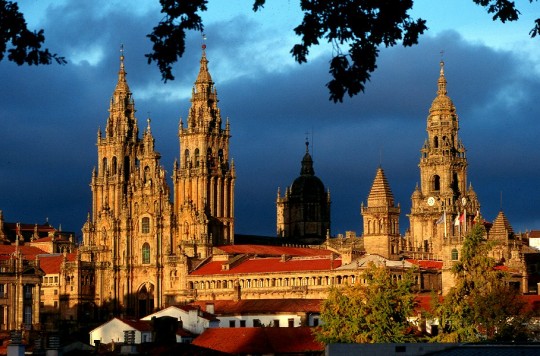
Santiago de Compostela’s famed cathedral (photo credit)
Finisterre is the most westerly point of the country, a small fishing port located between the Rias Altas and the Rias Baixas, the upper and lower bays that the region is known for. The Rias Altas are small inlets, and the Rias Baixas are known for the scenic beaches and the cities of Pontevedra and Vigo.
There are many small towns in the area. A short road trip from one of the major cities can take visitors to Lugo, a heritage site, and to Betanzos, an ancient town with remnants of medieval walls. Celanova is another small town known for the San Salvador Monastery. The coastal town of Combarro is known for the horreos, ancient stone granaries, that can be seen on the waterfront.
Destinia.co.uk is a multilingual online travel agency offering hotels, flights and travel packages to destinations around the globe. I hope you enjoyed their insight into Galicia! Watch for my post on my trip to Santiago de Compostela and A Coruña soon.
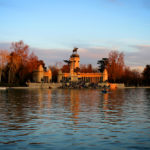
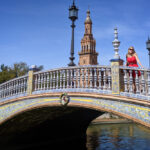

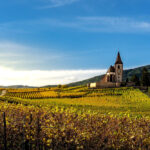
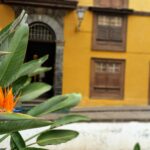





Another delightful journey! The area sounds so peaceful and beautiful. I would love to go there!
Looks like a fabulous place to visit. Perhaps I need to put that on my bucket list! Thanks for posting this. Love you!